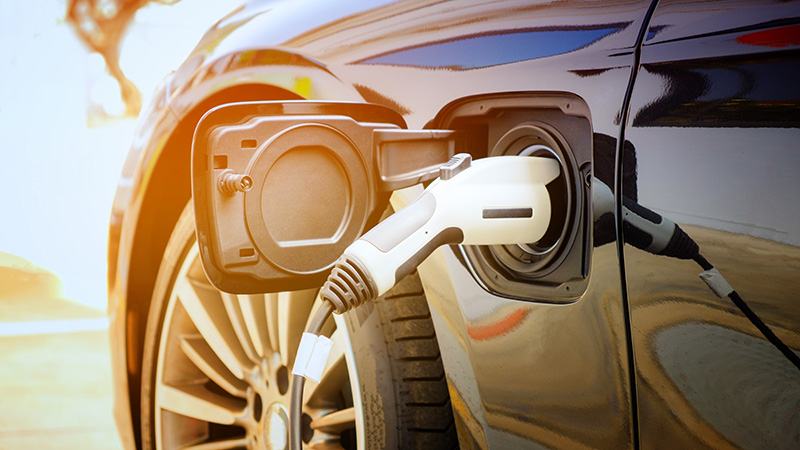June 8, 2022
What is Advanced Clean Cars II and what does it do?
Advanced Clean Cars II (ACC II) is a proposed policy that states can start adopting in 2022 to ensure the economic, environmental, and health benefits of electric vehicles (EVs) are available to consumers sooner rather than later. Additionally, ACC II will make new EVs more reliable and affordable so that can meet the needs of all drivers. After the rule is finalized later this year, it will become effective in 2026 and will require an increasing percentage of new EV sales each year. By 2035, all new vehicles sold would need to have an electric power train. Used vehicles would remain in circulation, and new vehicles which use both an electric and gasoline power would still be sold.
ACC II is the successor to the original Advanced Clean Cars rule, also sometimes called the zero-emission vehicle (ZEV) rule, which has now been adopted by 17 U.S. states and the District of Columbia. Under Section 117 of the Clean Air Act, states can either use the federal standard for vehicle emissions or adopt standards like ACC II which would promote a faster adoption of cleaner vehicles.
Why should states adopt Advanced Clean Cars II?
ACC II would save consumers money, improve air quality in our cities, and address the urgent challenge of climate change, all while ensuring equitable access to this new vehicle technology.
Saving Consumers Money
Adopting ACC II would rapidly accelerate the prevalence of EVs in the marketplace, saving customers money at the gas pump, on monthly electricity bills, and on avoided trips to the maintenance shop. EVs are much cheaper to fuel than internal combustion engine vehicles, and EVs require less maintenance than their gasoline counterparts.
According to the Staff Report on the draft ACC II rule, an EV bought in 2026 will cost $3,200-$4,200 less than a gasoline powered car over its lifespan, and those lifetime cost savings will increase to $7,700-$8,800 per vehicle for a car bought in 2035. M.J. Bradley & Associates’ studies for Colorado, New Mexico, Nevada and other states have found that widespread adoption of EVs, paired with smart management of the electric system, also would reduce electricity costs for all ratepayers.
Not Just More EVs, But Better Ones Too
ACC II doesn’t just make more EVs available to customers, it also requires better ones to be available to customers. In order for automakers to get credits under ACC II, vehicles sold need to meet certain technology standards — which ensure that new vehicles can drive longer on a single charge, have batteries that last longer, come with charging cords, and are easier to get serviced. This will help to ensure that the EVs of the future are able to meet the needs of all drivers, regardless of how they use their vehicle.
Clean Cars Improve Air Quality
EVs offer huge air quality benefits. While gasoline-powered vehicles spew smog-forming emissions that lead to increased incidence of heart diseases, respiratory infections, and lung cancer, EVs have zero tailpipe emissions. (In fact, EVs don’t even have a tailpipe!) This air pollution hurts low-income individuals and communities of color the hardest, as discriminatory housing policies have put their homes near highways and industrial areas that have higher concentrations of these harmful emissions.
The American Lung Association’s 2022 “State of the Air” report found that 60% of people in the Intermountain West live in places with failing grades for air quality, and that percentage has been increasing each year. Adopting zero-emission vehicle standards like ACC II is one of the best steps states can take to clean up the air, according to the report.
Clean Cars Tackle Climate Change
Climate change is one of the greatest challenges of our time, and its impacts are becoming graver each year. International scientists agree we need to bring our greenhouse gas emissions to zero by 2050 in order to avoid irreversible warming. Requiring all new passenger vehicle sales to be EVs by 2035 would bring emissions from the passenger vehicle sector — which accounts for 58% of U.S. greenhouse gas emissions in the transportation sector — down to zero by 2050. Adopting ACC II would ensure participating states were taking steps in line with the urgency scientists say we need in order to avert catastrophic climate change.
Clean Cars Address Equity
While EVs offer clear economic, environmental, and public health advantages, those benefits must become more accessible to all consumers. ACC II addresses equity considerations by offering credits to auto manufacturers in the early years of the plan that incentivizes them to bring cheaper models to the market. The credits apply for new passenger vehicles costing less than $20,000 and new SUVs priced less than $27,000. These “Environmental Justice Credits” encourage auto manufacturers in the early years of the rule to produce more affordable EVs, which will earn them more credits and make it easier to comply with the yearly sales requirements.
The rapid increase in new EV availability is expected to lead to growth in the used EV market, as first-generation EV drivers move their vehicles to the used car market. While complementary policies will be needed, ACC II is a policy which would make this technology and its benefits more accessible to more individuals, regardless of their income level.
What are the next steps for states that want to pursue this rule?
While state processes vary, the proposed rule in most states must be heard before the state agency responsible for developing air quality regulations. Air quality regulators typically only bring forward these rules for consideration if the state’s governor requests it or the state legislature requires it. The U.S. Clean Air Act requires several years’ delay between adoption of the rule and the date the requirements start, so states should move quickly to adopt this rule in 2022 or 2023 in order to more quickly begin reaping the economic, health, and climate benefits of accelerated EV use.



